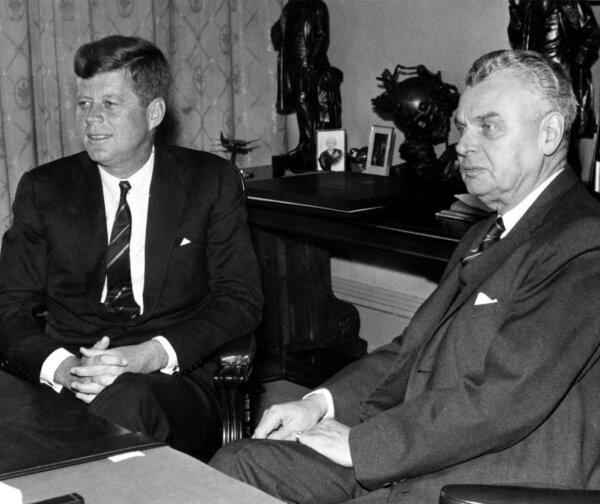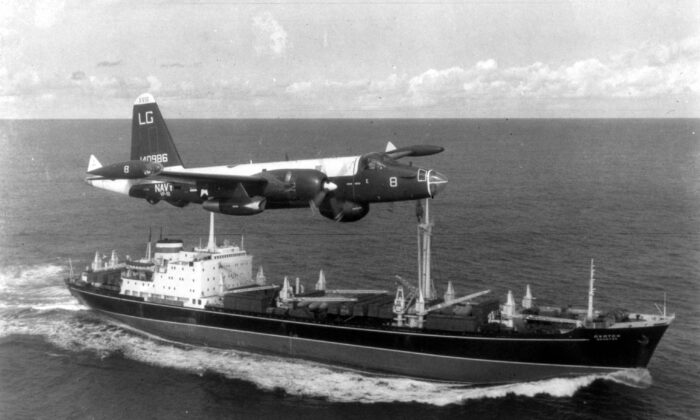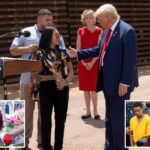Commentary
On the evening of Oct. 22, 1962, President John F. Kennedy made a dramatic appearance on television to announce that the Soviet Union had taken the intolerable step of installing offensive missiles in Cuba, just 90 miles from the mainland United States. Kennedy’s appearance was followed shortly after 8 p.m. by Canadian Prime Minister John Diefenbaker, speaking in the traditional setting, the House of Commons.
It was a harrowing moment—the high drama of which many baby boomers remember because as children they were taught how to shelter under their school desks when the bombing started.
One way or another, Diefenbaker got the memo too late. As if to add pressure, Pearson, the veteran diplomat who was now leader of the Opposition, telephoned the prime minister in the evening to urge him to make a statement right away. Having missed the memo but wanting to be statesmanlike, Diefenbaker mentioned the idea of U.N. inspectors.
Historian Graeme Garrard refers to the half-cocked proposal in an upcoming Dorchester Review article: “This well-intentioned, if rather naive, offer was taken by Kennedy to imply that Canada did not trust U.S. claims, which further angered him.”

Prime Minister John Diefenbaker with U.S. President John F. Kennedy in Ottawa in 1961. CP PHOTOS
Sharing a huge airspace over the northern hemisphere, Ottawa and Washington agreed to joint operational control and integrated command of their air and naval forces, answerable to both countries’ chiefs of staff, in turn under civilian government control.
In a crisis, NORAD was supposed to guarantee “the fullest possible consultation between the two Governments on all matters affecting the joint defence of North America” (emphasis added). This was all negotiated by the diplomats in the 1950s. Canada’s air force and navy already cooperated closely with their U.S. and North Atlantic counterparts.
As the crisis mounted, the White House proceeded as if Canada’s cooperation was a matter of course.
Canada had been informed of the situation in Cuba a week earlier through evidence gathered by U-2 spy planes. However, during the Cuban Missile Crisis, the U.S. administration did not consult Canada, despite it being NORAD’s first major test. President Kennedy acted unilaterally by imposing a quarantine around Cuba and declaring that the U.S. Navy and Air Force would interdict Soviet ships by force if necessary.
Despite the close working relationship between NORAD and NATO, Kennedy and his advisers chose to act alone, without consulting Canada. Additionally, NORAD had requested that Canada raise its military alert level to Defcon 3, but Prime Minister Diefenbaker hesitated to make a decision, causing a political dilemma.
The Royal Canadian Air Force was undergoing significant developments at the time, with plans to replace CF-100’s with CF-101 Voodoos. Despite the cancellation of the CF-105 Avro Arrow, Canada was experiencing a “Golden Age of Canadian Aviation.”
Ultimately, the decision to raise the alert level was a point of contention within the Canadian government, with Diefenbaker and External Affairs Minister Howard Green opposing it. However, the Canadian military quietly raised its alert status regardless.
The crisis highlighted the need for better communication between political leaders and the military, as well as addressing bureaucratic disarray and lack of strategic planning. Despite Canada’s desire for a seat at the table, the events of 1962 showed the challenges of balancing sovereignty with international cooperation. Please rewrite this sentence.
Source link








